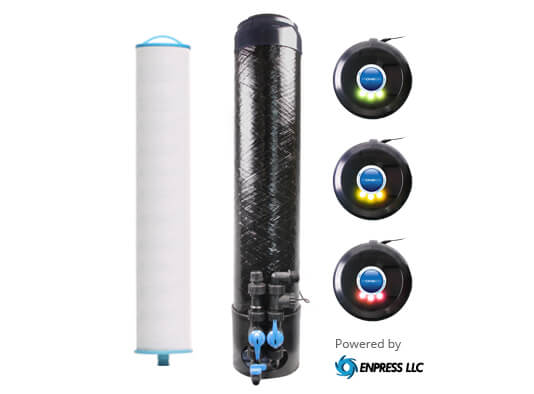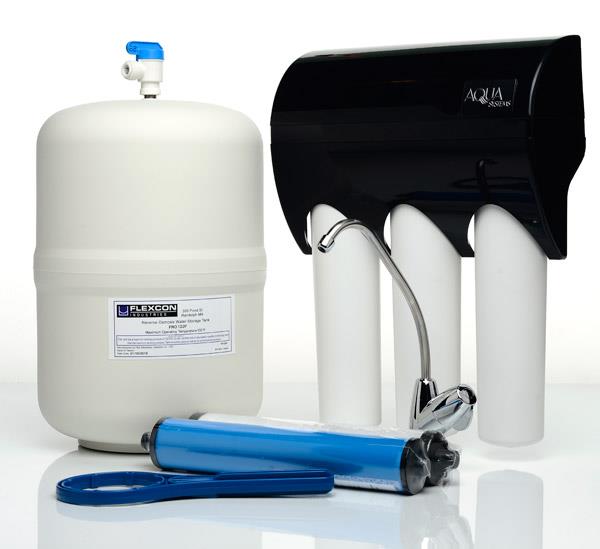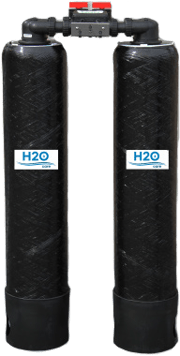What Are PFAS & How To Remove PFAS FROM Water
This page explains what PFAS are, their potential health effects, and most importantly, ways to remove PFAS from drinking water
Understanding Forever Chemicals in Your Water
PFAS (per- and polyfluoroalkyl substances) have earned the nickname “forever chemicals.” This is because they don’t break down naturally in the environment or our bodies.
PFAS are synthetic chemicals manufactured since the 1940s that are in countless everyday products. They have been used extensively in:
- Non-stick cookware (like Teflon)
- Water-repellent clothing and fabrics
- Stain-resistant carpets and furniture
- Certain food packaging
- Firefighting foams
- Paints and polishes
- Construction materials
Their remarkable stability, once considered a product benefit, is precisely what makes them an environmental concern today. Testing has revealed PFAS in drinking water supplies throughout the U.S.
Among the thousands of PFAS compounds, PFOA (perfluorooctanoic acid) and PFOS (perfluorooctanesulfonic acid) have been widely used and studied. These chemicals share concerning characteristics:
- They persist in the environment
- They accumulate in the human body over time
- They can travel long distances through soil and groundwater
Research has linked PFOS and PFOA in water to several potential health effects, prompting manufacturers to phase out production in the United States. However, these substances remain in our environment and may still enter the country through imported products.
The EPA set legally enforceable levels (Maximum Contaminant Levels or MCLs) of 4.0 parts per trillion (ppt) for PFOA and PFOS in drinking water. MCLs were also set for other PFAS and specific mixtures. Public water suppliers have until 2029 to find ways to lower PFAS levels if tests show that drinking water exceeds MCLs. Private well owners must set up their own water testing and well water treatment to ensure compliance

Health Risks of PFAS in Water
Evidence suggests that PFAS in drinking water may cause negative health effects in humans. If humans or animals eat or drink PFAS, the chemicals are absorbed and can build up in the body.
Scientific research continues to reveal how forever chemicals in water may impact our health. Animal studies show PFOA and PFOS can affect multiple body systems, while human research has identified various concerning patterns. For example, studies consistently show elevated cholesterol levels among people exposed to PFAS.
Growing evidence also suggests links between PFAS exposure and:
- Immune system suppression, including reduced vaccine effectiveness
- Certain cancers, particularly kidney and testicular cancer
- Thyroid hormone disruption
- Low birth weight
- Liver function changes
The research is especially concerning because these chemicals can remain in the body for years. Even low levels of PFAS in drinking water may accumulate over time, potentially leading to concentrations that affect human health.
See this link for more basic information on PFAS.
Removing PFAS From Water

Activated Carbon, Point of Entry System
Activated carbon helps remove bad tastes and odors from water, but did you know it can also remove PFAS? Our granular activated carbon water treatment system has been tested for the reduction of PFAS/PFOA according to NSF/ANSI 53, as well as P473. This system removes these chemicals at the point of entry on your property. You must exchange the carbon approximately every 100,000 gallons.

Reverse Osmosis (RO), Point of Use System
Reverse osmosis uses a special membrane to purify water and remove extremely small contaminants. People typically install an RO system under their kitchen sink or in the basement. It’s also possible to run lines to feed ice makers or refrigerator dispensers. RO can remove up to 99% of PFAS, including PFOA and PFOS, in water.

Ion Exchange (Anion Resin): The Preferred Treatment Method
Ion exchange systems use specialized resin beads designed specifically to target and capture PFAS molecules in water. This advanced treatment method works through a simple but effective principle.
Negatively charged PFAS compounds are attracted to and bind with the positively charged sites on the resin beads. As water passes through the system, PFAS molecules are captured by resin beads and “exchanged” for beneficial minerals.
Protect Your Water From PFAS With H2O Care
With PFAS concerns growing, ensuring your water is free from these “forever chemicals” is more important than ever. At H2O Care, we offer proven solutions to remove PFAS from your drinking water, giving you peace of mind about your family’s health.
Our approach to PFAS treatment includes:
- Professional testing to identify PFAS levels in water
- Custom removal systems based on your water chemistry and needs
- Advanced technology for superior, long-term protection
- Expert installation by certified water quality specialists
- Ongoing maintenance to ensure continued effectiveness
For over 30 years, we’ve been helping homeowners throughout Massachusetts, Southern New Hampshire, Maine, and Northern Rhode Island achieve the highest quality water possible. We install top systems and equipment, using the latest technology and industry best practices to provide solutions for various regional water issues.
Contact us today for a water analysis. Don’t wait to address forever chemicals in your water (PFAS). The right treatment system provides immediate protection and peace of mind.
